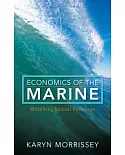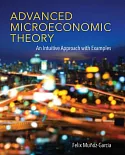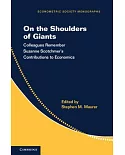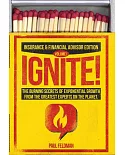Get the AP college credits you've worked so hard for... Our savvy test experts show you the way to master the test and score higher. This new and fully expanded edition examines all AP
Chemistry areas including in-depth coverage of solutions, stoichiometry, kinetics, and thermodynamics. The comprehensive review covers every possible exam topic: the structure of matter, the
states of matter, chemical reactions, and descriptive chemistry. Features 6 full-length practice exams with all answers thoroughly explained.
Follow up your study with REA's test-taking strategies, powerhouse drills and study schedule that get you ready for test day.
DETAILS
- Comprehensive, up-to-date subject review of every AP Chemistry topic used in the AP exam
- Study schedule tailored to your needs
- Packed with proven key exam tips, insights and advice
- 6 full-length practice exams. All exam answers are fully detailed with easy-to-follow, easy-to-grasp explanations.
TABLE OF CONTENTS
About Research & Education Association
Preface
About the Test
Scoring
Contacting the AP Program
AP CHEMISTRY COURSE REVIEW
CHAPTER 1 - THE STRUCTURE OF MATTER
A. ATOMIC PROPERTIES
1. The Atomic Theory and Evidence for the Atomic Theory
2. Chemical and Physical Approaches to Atomic Weight Determination
3. Atomic Number and Mass Number, Isotopes, Mass Spectroscopy
4. Electron Energy Levels
5. The Periodic Table and Periodic Relationships: Symbols, Radii, Ionization Energy, Electron Affinity, Oxidation States
B. BONDING
1. Types of Bonds
2. Effects of Bonding Forces on States, Structures, and Properties of Matter
3. Polarity and Electronegativity
4. Geometry of Ions, Molecules, and Coordination Complexes
5. Molecular Models
C. NUCLEAR CHEMISTRY, NUCLEAR EQUATIONS, HALF-LIVES, RADIOACTIVITY
CHAPTER 2 - STATES OF MATTER
A. GASES
1. Ideal Gas Laws
2. Kinetic Molecular Theory
B. LIQUIDS AND SOLIDS
1. Kinetic-Molecular View of Liquids and Solids
2. Phase Diagram
3. Changes of State, Critical Phenomena
4. Structure of Crystals
C. SOLUTIONS
1. Types of Solutions
2. Factors Affecting Solubility
3. Ways of Expressing Concentrations
4. Colligative Properties
5. Interionic Attractions
CHAPTER 3 - REACTIONS
A. TYPES
1. Forming and Cleaving Covalent Bonds
2. Precipitation
3. Oxidation and Reduction
B. STOICHIOMETRY
1. Recognizing the Presence of Ionic and Molecular Species
2. Balancing Chemical Equations
3. Weight and Volume Relationships
C. EQUILIBRIUM
1. Dynamic Equilibrium Both Physical and Chemical
2. The Relationship Between Kp and Kc
3. Equilibrium Constants for Reactions in Solutions
D. KINETICS
1. Rate of Reaction
2. Reaction Order
3. Temperature Changes and Effect on Rate
4. Activation Energy
5. Mechanism of a Reaction
E. THERMODYNAMICS
1. State Functions
2. The First Law of Thermodynamics
3. The Second Law of Thermodynamics
4. Change in Free Energy
CHAPTER 4 - DESCRIPTIVE CHEMISTRY
1. Horizontal, Vertical, and Diagonal Relationships in the Periodic Table
2. Chemistry of the Main Groups and Transition Elements and Representatives of Each
3. Organic Chemistry
4. Structural Isomerism
PRACTICE EXAMS
AP CHEMISTRY EXAM I
AP CHEMISTRY EXAM II
AP CHEMISTRY EXAM III
AP CHEMISTRY EXAM IV
AP CHEMISTRY EXAM V
AP CHEMISTRY EXAM VI
FORMULAS AND TABLES
EXCERPT
About Research & Education Association
Research & Education Association (REA) is an organization of educators, scientists, and engineers specializing in various academic fields. Founded in 1959 with the purpose of
disseminating the most recently developed scientific information to groups in industry, government, high schools, and universities, REA has since become a successful and highly respected
publisher of study aids, test preps, handbooks, and reference works.
REA's Test Preparation series includes study guides for all academic levels in almost all disciplines. Research & Education Association publishes test preps for students who have not yet
completed high school, as well as high school students preparing to enter college. Students from countries around the world seeking to attend college in the United States will find the
assistance they need in REA's publications. For college students seeking advanced degrees, REA publishes test preps for many major graduate school admission examinations in a wide variety of
disciplines, including engineering, law, and medicine. Students at every level, in every field, with every ambition can find what they are looking for among REA's publications.
While most test preparation books present practice tests that bear little resemblance to the actual exams, REA's series presents tests that accurately depict the official exams in both degree
of difficulty and types of questions. REA's practice tests are always based upon the most recently administered exams, and include every type of question that can be expected on the actual
exams.
REA's publications and educational materials are highly regarded and continually receive an unprecedented amount of praise from professionals, instructors, librarians, parents, and students.
Our authors are as diverse as the fields represented in the books we publish. They are well-known in their respective disciplines and serve on the faculties of prestigious high schools,
colleges, and universities throughout the United States and Canada.
PREFACE
This book provides an accurate and complete representation of the Advanced Placement Examination in Chemistry. Our six practice exams are based on the most recently administered Advanced
Placement Chemistry Exams. Each exam is three hours in length and includes every type of question that can be expected on the actual exam. Following each exam is an answer key complete with
detailed explanations designed to clarify and contextualize the material. By completing all six exams and studying the explanations which follow, you can discover your strengths and
weaknesses and thereby become well prepared for the actual exam.
The formulas and tables for the AP Chemistry Exam can be found at the back of this book, beginning on page 417. You will be provided these formulas and tables when you take the actual exam.
You should also use this material when taking the practice tests in this book.
ABOUT THE TEST
The Advanced Placement Chemistry Examination is offered each May at participating schools and multi-school centers throughout the world.
The Advanced Placement Program is designed to allow high school students to pursue college-level studies while attending high school. The participating colleges, in turn, grant credit and/or
advanced placement to students who do well on the examinations.
The Advanced Placement Chemistry course is designed to be the equivalent of a college introductory chemistry course, often taken by chemistry majors in their first year of college. Since the
test covers a broad range of topics, no student is expected to answer all of the questions correctly.
The exam is divided into two sections:
1) Multiple-choice: Composed of 75 multiple-choice questions designed to test your ability to recall and understand a broad range of chemical concepts and calculations. This section
constitutes 45% of the final grade and you are allowed 90 minutes for this portion of the
exam. Calculators are not permitted for this section of the exam.
2) Free-response section: Composed of several comprehensive problems and essay topics. This section constitutes 55% of the final grade and the student is allowed 90 minutes for this
portion of the exam. You may choose from the questions provided. These problems and essays are designed to test your ability to think clearly and to present ideas in a logical, coherent
fashion.
You can bring an electronic hand-held calculator for use on the 40-minute free-response section. Essay and chemical-reaction questions comprise the last 50 minutes of the test, during which
calculators are not permitted.
A final note about calculators: Most hand-held models are allowed in the test center;
the only notable exceptions are those with typewriter-style (QWERTY) keypads. If you are unsure if
your calculator is permitted, check with your teacher or Educational Testing Service.
SCORING
The multiple-choice section of the exam is scored by crediting each correct answer with one point, and deducting only partial credit (one-fourth of a point) for each incorrect answer. Omitted
questions receive neither a credit nor a deduction. The essay section is scored by a group of more than 1,000 college and high school educators familiar with the AP Program. These graders
evaluate the accuracy and coherence of the essays accordingly. The grades given for the essays are combined with the results of the multiple-choice section, and the total raw score is then
converted to the program's five-point scale:
5 - Extremely well qualified
4 - Well qualified
3 - Qualified
2 - Possibly qualified
1 - No recommendation
Colleges participating in the Advanced Placement Program usually recognize grades of 3 or higher.
CONTACTING THE AP PROGRAM
To obtain a registration bulletin or to learn more about the AP Chemistry Examination, contact:
AP Services
P.O. Box 6670
Princeton, NJ 08541-6670
Phone: (609) 771-7300
E-mail:
[email protected]
Website: http://www.collegeboard.com





















